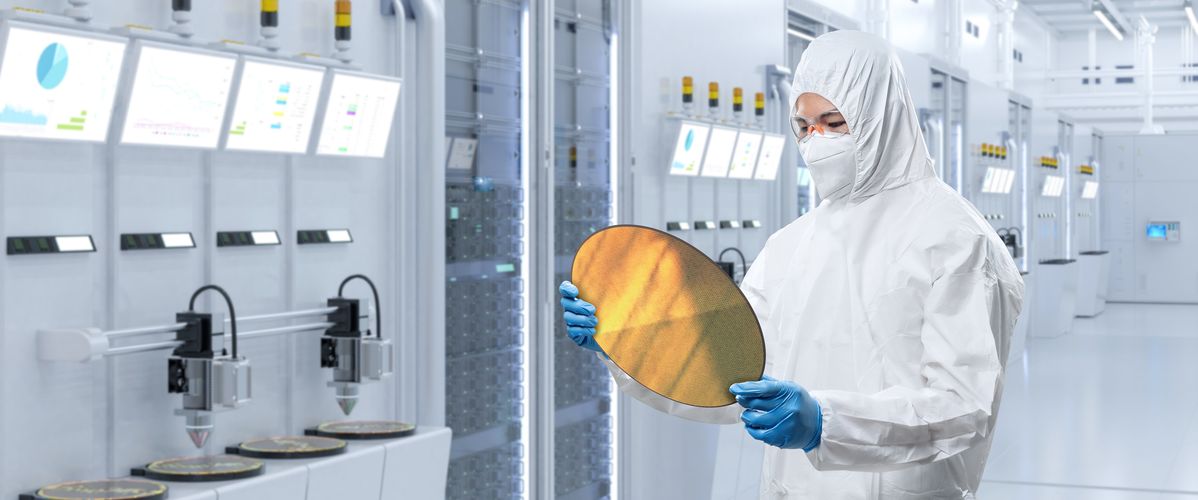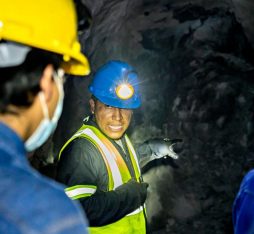• The predicted boom in the market, which is set to double in size and reach $1 trillion dollars in annual sales by 2030, has companies racing to invest in new capacity.
• However, chip makers will be hard pressed to cope with a shortage of talent and geopolitical risks which may jeopardize what would otherwise be a bright future.
Headline-grabbing breakthroughs in generative AI and the race to take advantage of the new technology have shaken up the world of semiconductors which is facing a number of challenges. Among the issues that have been raised is the question of the outdated design of traditional CPU (Core Processing Unit) chips, which have been set aside by developers using GPUs (graphics processing units) to train and run AI models. “Demand will continue to grow, while the leader in the sector, Nvidia, has already been forced to limit deliveries of GPUs,” explains Carlo Reita, the director of research and innovation alliances for the
technology and research division of the French public research organization CEA. Nvidia’s success is notably due to its well-oiled hardware and software solutions that can be configured to facilitate cutting-edge parallel processing required by AI. For the researcher, the current trend is focused on a cloud-centric vision of generative AI, which is deemed to be too demanding for local machines: “Companies need these tools so that they can leverage their data to improve production processes and products. And there is also significant interest in AI for Industry 4.0.” Enthusiasm for the technology is such that major players like Amazon and Google, among others, have decided to develop their own dedicated AI chips.
When we speak of the AI market, we’re talking about building factories that cost between $10 and $20 billion
The need for massive investment
OpenAI CEO Sam Altman recently made headlines when he announced that $5 trillion to $7 trillion would be needed to restructure the semiconductor industry. Estelle Prin, the founder of the Semiconductors Observatory, believes that the American businessman “is asking the right questions about the industry and semiconductor related issues encountered by big tech companies and other stakeholders. We are talking about a market that was worth $527 billion in 2023, which is set to rise to $1 trillion in the next six years. All of the players need to be in position to increase their production.”
Artificial intelligence will require more dedicated production lines. As it stands, the Taiwanese manufacturer TSMC produces 90% of the chips that are used to train and run generative AI systems. For its part, Samsung has decided to challenge TSMC with a range of 2nm chips. “When we speak of the AI market, we’re talking about building the world’s most expensive and advanced semiconductor factories at a cost of $10 to $20 billion each,” points out Estelle Prin. As part of its bid to rival the Taiwanese tech giant, Intel, which has taken a radical decision to separate its chip development and foundry businesses, is aiming for a 1.4nm production process in 2029. The American multinational wants to become the world’s second biggest chip maker by 2030. For Carlo Reita, “Intel can get back into the race.” For that to happen, the Santa Clara giant plans to have new production facilities up and running in 2027. Finally, in addition to the rush to build specific AI processors, there is also a boom in the development of other AI-dedicated components such as high-bandwidth memory (HBM) modules, which are expected to make inroads in the market, which is currently dominated by graphics processing units (GPUs).
A shortage of talent
Above and beyond the needs of the market, the success of industry players keen to cash in on AI will depend on their ability to attract new talent. “When it comes to AI, there’s a real shortage of engineers and PhD students. And there was already a shortage of talent in traditional semiconductors,” points out Estelle Prin. The difficulty of attracting suitable staff is a critical problem in Taiwan, where the number of unfilled jobs in the industry has been steadily increasing. “There is a lack of skills throughout the chain of production,” explains Carlo Reita. “From cleanroom operators to systems application designers, it’s hard to find new recruits, and we have been affected by this at the CEA. The risk is that the supply won’t keep up with demand, not even in Europe where the talent has the most advanced skills.”
The challenge of digital sovereignty
In Europe, players like the CEA are investing in edge computing solutions in anticipation of the growing need for more independent AI processors that are not confined to the cloud. On a global level, the race to take advantage of AI has geopolitical implications. Two of the main chip-producing countries Taiwan and South Korea are respectively threatened by China and North Korea, which is notably why TSMC is currently building a US government funded fabrication plant in Arizona. However, initiatives like these will not resolve the problem of access to certain rare raw materials that play an essential role in chip electronics in a context where China produces 60% of the planet’s gallium and 80% of its germanium. In short, the fastest growing global market is also one of the world’s most vulnerable.
 Carlo Reita
Carlo Reita












